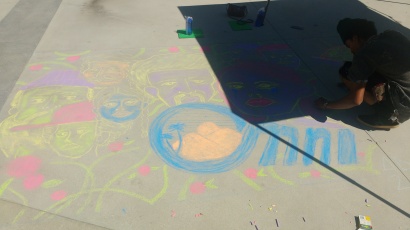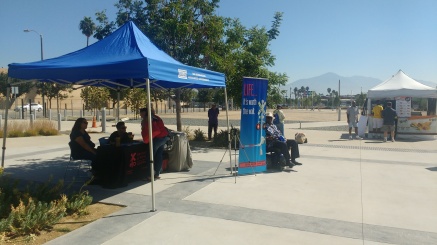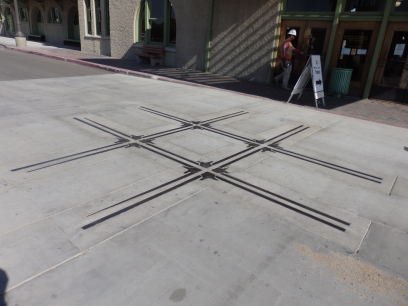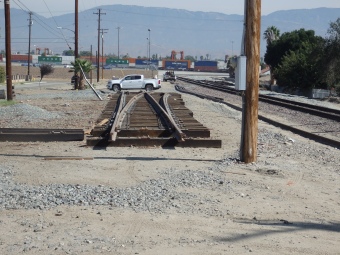Recently over at Bike Lab, a piece entitled “Top Down” was posted wherein the author argues that bike advocacy has been too focused on hierarchy on the roads and getting bikes on the top of the food chain. Particular umbrage was taken to the fact that at least in the Western/Anglophone world, there has been a lot of time and attention paid to Dutch infrastructure in particular as something to look up to, even going so far as to suggest that it’s just a(nother) form of colonialism.
Here’s the relevant passage, quoted in full:
Many of the cities I’ve cycled through in Italy, for example, have virtually no bicycle-dominant infrastructure, and little dedicated infrastructure at all, but have high cycling rates: Ravenna, for example, claims 17% mode share, and it’s common to see nonni riding there and in other Italian cities. I studied in Berlin which claims 15% mode share, and the cycling infrastructure there is…certainly not dominating. (Mostly, bikes ride on the sidewalk). There is sparse data available about cycling rates in the global South, but, for example, Raipur, India claims 28% mode share, and many other Indian cities are above 10%. The Dutch Cycling Embassy, and much of U.S. bike advocacy, seems to willfully ignore the fact that cycling is common in many places outside of Northern Europe, and generally is not done on Dutch-style infrastructure in other places.
Colonialism is not merely the physical domination of lands and people; it is also the cultural subjugation of different ways of thinking and being. A brief review of Dutch colonial history should make one extremely cautious about the top-down imposition of Dutch ideas on other places and cultures.
Jumping right in, it certainly is true that both of the European examples certainly would likely be seen as an improvement to most Americans, though perhaps for different reasons. Italian towns like Ravenna lack anywhere near the networks of bikeways to the quality that the Dutch have, but they do have some cycletracks (which in some cases, is a generous description for bike stencils on sidewalks) here and there. Additionally, the cities definitely predate the car, so they still more ore less have cores that are built on a human scale which also helps make biking quite amenable. (Space is so tight in some places that there are not even sidewalks.)
On the other hand, as mentioned in the quote, Berlin has more bike infrastructure that might seem vaguely similar to the cycletracks that people attribute to being Dutch, though its quality and provision are seriously lacking in comparison. They also have some woonerf-type areas (e.g. Maassenstrasse) and periodically drop announcements for impressive-sounding bike-related things like a network of “bike superhighways” stretching through the city and into the suburbs. So people certainly could get inspired there as well and in fact, it is not uncommon to see various discussions about bike infrastructure to actually invoke Berlin (or the whole of Germany more generally) as an example of what is “realistic” for America to achieve.
We were also asked how come no one pays attention to the global South, with Raipur being specifically called out as an example with a 28% mode share. However, no source is given for that figure and a search of Google turned up nothing remotely close. Attempts to just check things out via Streetview were thwarted since there apparently is no official Streetview imagery of the city. Thus, from what can be seen via a couple of 360 shots at various places in the city as well as some videos, there does not appear to be anywhere near a ~28% mode share for bicycling. What there is a lot of are scooters (e.g. Honda PCX) and motorcycles, so it seems more plausible that all the “biking” being referred to is that which is conducted by those vehicles, not bicycles.
Now to be sure, that is not to say that there is no bicycling at all. A few people on bikes can be seen here and there, but when one considers the fact that The Netherlands as a whole has a mode share of about 26% and just about any random picture most everywhere in the country, but especially in cities, will manage to include at least one bike in it if the photographer is not careful to exclude them, the volume of biking that can be seen in Raipur just does not seem to add up to anywhere near 28% at all.
(It is also possible that “Raipur” is referring to the city of Nava Raipur [now also known as Atal Nagar], a new greenfield “smart city” which is being constructed about a dozen miles east of Raipur itself. Nava Raipur apparently includes one of the first bike share systems in India, but the city appears to largely still be empty, with little evidence of any life at all on the streets. Nevertheless, a promo video of the town shows that they have built…cycletracks! But not to belabor the point, it just cannot be left unsaid that the quality of those bikeways is simply not on par with what would generally be considered best practice.)
Why Dutch?
Now with that backstory and review in mind, let’s gone on to answering the real question: Why Dutch? Why should bike advocates, perhaps especially in minority communities, look to Dutch infrastructure instead of something in say Nairobi, Manila, or Lima? What is so special about Dutch infrastructure in particular that they even have their own “Dutch Cycling Embassy” specifically geared toward exporting their expertise on bike infrastructure to the world? And why do even cities in the global South invite the DCE to their communities to share that expertise on bike infrastructure?
The first answer is that bikeway guidelines and standards should be based on objective criteria developed from the hard sciences with a goal of facilitating convenient, efficient travel by bike that is safe and accessible to all and it just so happens that the Dutch have thus far provided the best overall package in that regard. The Dutch recommend separating bikes from high-speed/volume motor traffic because the latter tends to be dangerous for bicyclists, as confirmed by numerous studies on the subject and which make the same recommendation. There are very real limits of physical space and the fact that only one bike can fit in a given amount at any one time, so being able to pass others and/or facilitating the ability for people to ride side-by-side will require width which Dutch guidelines facilitate well. Even something which might seem a bit minute or nitpicky like the Dutch practice for angled curbs next to bikeways is in fact very clearly directly related to the very real fact that a glance or a pedal strike on the usual flat surface curbs can be quite dangerous for a bicyclist.
Intersection designs should reduce conflicts and encourage speeds in crossing areas that are low enough so that users can see each other and react if necessary and the effectiveness of the specific designs developed by the Dutch for both traffic light-controlled intersections and roundabouts has been verified via research as being safer compared to other options too. (The other common type of Dutch intersection is that which can usually be found in 30 km/h zones. The design is more extensively described by Robert Weetman, but they generally just consists of features such as a raised intersection and operate by the basic “yield-to-the-right” rule. Research evaluating the safety impacts of the entirety of the 30 km/h zone program of which they are a part has found them to be successful at improving safety too.)
So in short, people admire and study the Dutch standards because the Dutch have achieved what can reasonably and pretty objectively be described as the best conditions for bicycling. The provision of low-stress bike accessibility is pretty ubiquitous in The Netherlands, Dutch people have the highest per-capita usage rates in the world while also still boasting some of the safest results for bicyclists in the world. Sure, not everything they do is perfect and it probably is true that not everything that what one might see in The Netherlands could be brought over wholesale without any modification based on local needs and concerns, but Dutch is likely still the best option that most places should emulate.
Additionally, the general backing for Dutch guidelines is in fact based pretty soundly in scientific realities that are not going to be much different around the world at all. Dutch people biking are almost certainly not more or less likely to die if mowed down by a distracted or drunk driver any more than people biking in Chicago are because all human bodies tend to respond to that sort of trauma pretty similarly. Thus, it makes little sense to exclude Dutch standards just because “we are not Dutch,” especially when talking about the expenditure of public funds that it can be quite hard to extract in the first place. Nevertheless, we have seen in recent years a gradual diffusion of various amounts of that Dutch know-how into other design guidelines and standards that are not Dutch for those who are really against stuff just because it is Dutch.
But there is also a second and perhaps more impactful answer to the question: Cars. More precisely, regaining control over them and their reign on society. The Dutch have done something to and about cars that many other communities would like to do: Come back from the precipice of complete domination of their society by cars. Even as car ownership rates and usage in The Netherlands having grown considerably since the 1970s when the bulk of the program to (re)introduce bike infrastructure really got underway, biking still makes up a significant portion of all trips taken by the Dutch, being only second in mode share (~26% nationally, but rising above 50% in the centers of some of the more dedicated cities) after the car, and Dutch society makes active progress to wrest more and more communities from the corrosive impacts of car usage. From removing parking in Amsterdam to closing arterial roads in Utrecht to reducing car access in city centers all over the country, the Dutch “war on cars” is real and bikes are certainly a part of it.
In marked contrast, cities in the global south simply have not had that experience and thus are unable to offer a blueprint that an observer from America is likely to discern as being viable. Many of those communities are either looking to “modernize” by adding cars and building roads or perhaps have already seen a substantial increase in the number of cars on their roads and are now approaching the point of being choked by cars. And while many of them might have had a historically high usage of bikes, it has been slumping as car usage has increased, including in some cases, outright bans ostensibly aimed at “improving congestion.” As such, while it absolutely is true that they certainly might have some lessons on urban and/or transport planning to glean about specific situations from those cities, the reality is that they ultimately do not offer a model of how to reverse car supremacy and improve biking.
(It is also worth noting that bicyclists who do exist in these global south cities, particularly around Africa where the infrastructure is not as well developed in the first place, are looking to see biking conditions improved and that they are asking for the types of investments that are generally associated with being “Dutch.” For example, cyclists in Lagos are asking the government to carve out space for them on the roads of that city. Ditto in Nairobi. And in Kampala, where the Ugandan government has endeavored to build a system of roads for non-motorized modes.)
So in summary, while there is a lot of consternation over the fact that the Dutch are seen as world leaders in biking, particularly by dedicated advocacy groups, the reasons for that are straightforward and it is not meant to be a “colonization” of communities of color. Most importantly, the Dutch have reversed the most acute ill effects of car supremacy in places where people work, live, and play which is something that would be especially welcome in communities that have historically been sliced and diced to make room for cars. Thus, if one is indeed interested in countering the ills of car supremacy in communities in a manner that works best for bikes, Dutch guidelines and standards are currently the most ideal for that job.




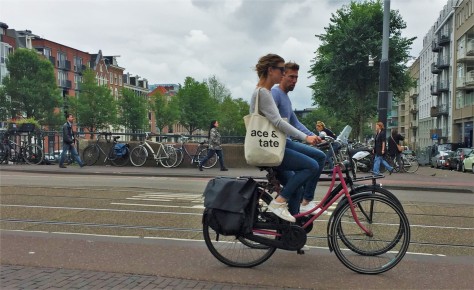 What is this strange world? No helmets, and no Lycra!
What is this strange world? No helmets, and no Lycra! 


